POSTCARD from Paris: Louvre Museum
The Louvre is one of the ‘big three’ museums in Paris. Comprising an impressive group of buildings – and offering the opportunity for much walking! – it is said to be the largest museum in the world.
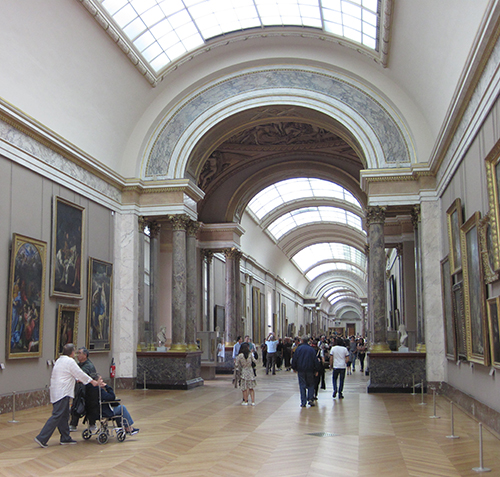 The other two ‘big’ museums in Paris are the Museé d’Orsay which was featured in the previous postcard (with Impressionist and Post-Impressionist art from the years 1848-1914) and the Centre Pompidou (with 20th century works created after 1914) which we didn’t have time to visit during this trip.
The other two ‘big’ museums in Paris are the Museé d’Orsay which was featured in the previous postcard (with Impressionist and Post-Impressionist art from the years 1848-1914) and the Centre Pompidou (with 20th century works created after 1914) which we didn’t have time to visit during this trip.
The Louvre is closed on Tuesdays!
The Louvre Museum is always top of the list when Anne and I visit Paris. However, this time, we arrived on a Monday afternoon and the Louvre is closed on a Tuesday, so we had to hold fire on our excitement for an additional 24 hours.
We took the advice from Booking.com to purchase our fast-track ticket from the Paris Tourist Office at 25 Rue des Pyramides. For the newest information about the Paris Travel Guide, click here.
If you think the queue we joined – on the left of the featured image above – was long, the one for those without tickets – on the right – was ten times longer. The tickets were no more expensive … and those in the longer queue were understandably frustrated.
Once inside, despite the crowds outside, the galleries were relatively empty.
The Louvre marquees
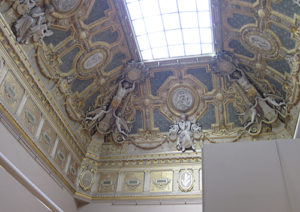 The pyramid outside the building is eye-catching enough but, inside, apart from the paintings, the architecture is wonderful.
The pyramid outside the building is eye-catching enough but, inside, apart from the paintings, the architecture is wonderful.
There are great sweeping stairways and three marquees: Mona Lisa, Venus de Milo and Winged Victory.
Long, long corridors, with hundreds of framed original paintings on display. And, you must remember to look upwards too, at the ceiling.
The Louvre boasts 35,000 art treasures inside
One of the world’s most authoritative museums, the Louvre’s collection ranges from arts and crafts of ancient civilizations right up to the middle of the 19th century.
The brochure boasts that there are 35,000 artistic treasures inside. We didn’t have time to count them … It’s also impossible to see everything in the Louvre in one day!
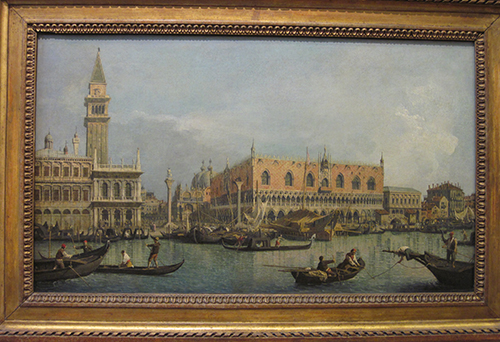
Antonio Canal by Canaletto
We consulted the free tour guide and identified the exhibits of most interest to us.
We were delighted to see paintings by our favourite artists: Archimbold, Bosch, Brueghel, Caravaggio, Carpaccio, Constable, Delacroix, Dürer, Gainsborough, Goya, Guardi, Ingres, Leonardo da Vinci, Raphael, Rembrandt, Rubens, Titian, Turner, van Eyck, Vermeer
One by Canaletto sparked a discussion as to when we might return to Venice. This stunning location is always on our to-visit list and, one day, I might find time to paint some scenes of Venice myself.
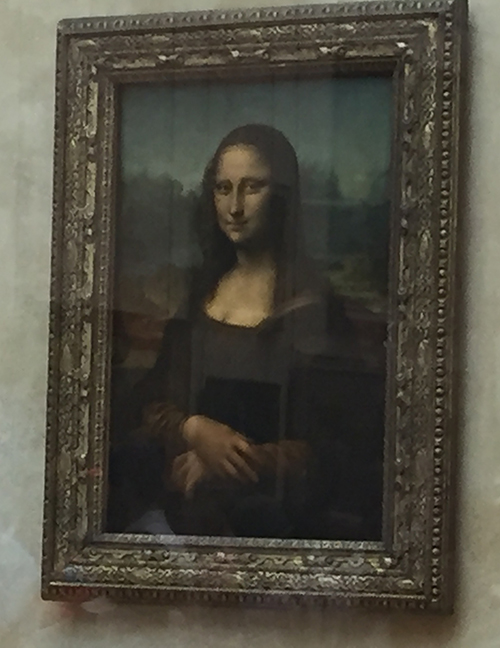 The paintings by Arcimboldo, Bosch and Brueghel also provoked discussion; they reminded us of the exhibition we’d seen at Les Baux-de-Provence only a few days earlier. I wrote about it in this postcard.
The paintings by Arcimboldo, Bosch and Brueghel also provoked discussion; they reminded us of the exhibition we’d seen at Les Baux-de-Provence only a few days earlier. I wrote about it in this postcard.
The Mona Lisa, of course, warrants a visit. It is tiny, and the crowd between you and it is huge.
One last indulgence: the Louvre gift shop
In all, we spent a good couple of hours walking up and down and around, and eventually had to admit, we needed to stop … and come back another time.
One last indulgence was a visit to the gift shop … where I treated myself to the Guide to the Louvre, which has proved very helpful in writing this postcard – and which I shall treasure.
The treasures outside the Louvre
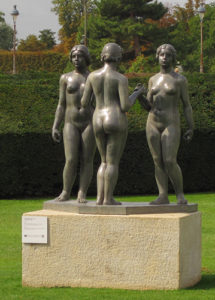 Back out into the sunshine, we were delighted to see this sculpture.
Back out into the sunshine, we were delighted to see this sculpture.
Usually, I also take a photo of the label. But, by now, we were so weary, we just headed to the nearest eatery for much needed refreshment.
Next to the Louvre are the Tuileries Gardens and yet more art to enjoy: statues by Maillol, alongside works by Rodin and Giacometti.
We have walked through these gardens on a previous visit and no doubt will do so again.
We will be back!
This post is one of my POSTCARD series, sharing all things ART with you when I go travelling. It’s the third and final one for this particular trip. The previous postcards were from Paradou, and Paris (the Musée d’Orsay)


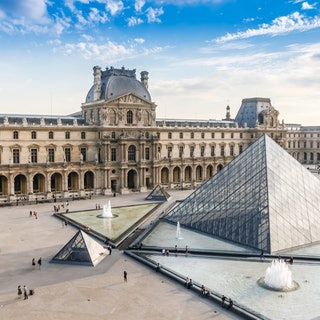
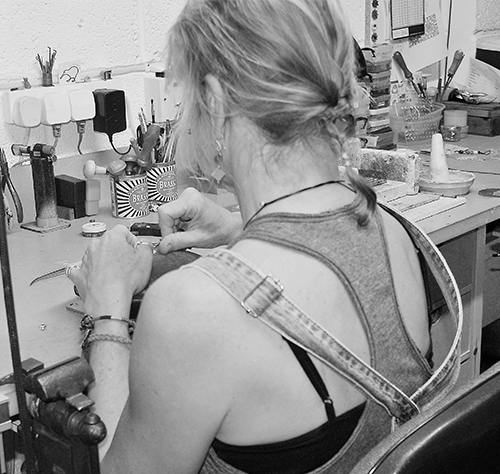
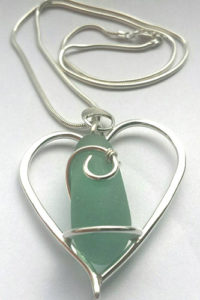
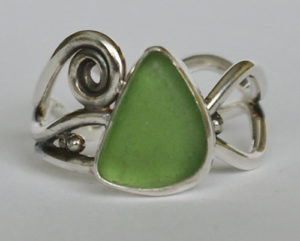 Fiona has lived in Devon by the coast all her life and, since a little girl, she has been collecting beach finds. This has influenced her work today, often using these finds either for mould making and casting, or for incorporating shells and, in particular, sea glass into her jewellery.
Fiona has lived in Devon by the coast all her life and, since a little girl, she has been collecting beach finds. This has influenced her work today, often using these finds either for mould making and casting, or for incorporating shells and, in particular, sea glass into her jewellery. 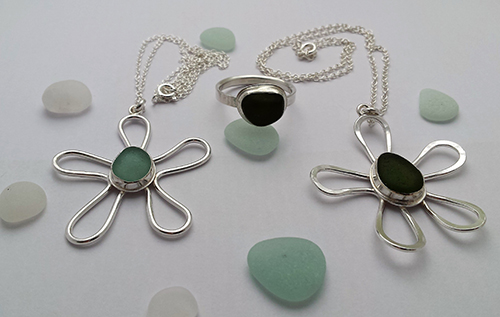
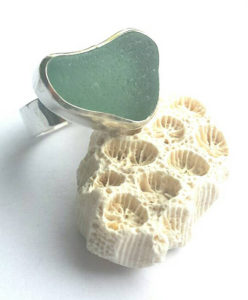 Jewellery Making Workshops
Jewellery Making Workshops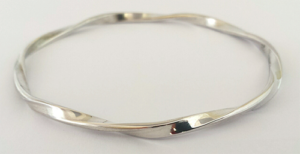 Taster workshops might result in your making a silver bangle or silver ring.
Taster workshops might result in your making a silver bangle or silver ring.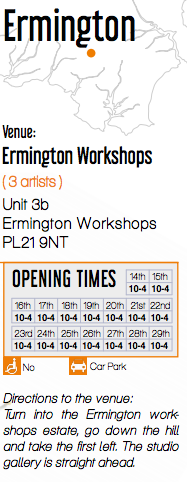 In case you can’t get you hands on a copy, here are the details for Fiona Cocks’s venue in Ermington – and the opening times.
In case you can’t get you hands on a copy, here are the details for Fiona Cocks’s venue in Ermington – and the opening times.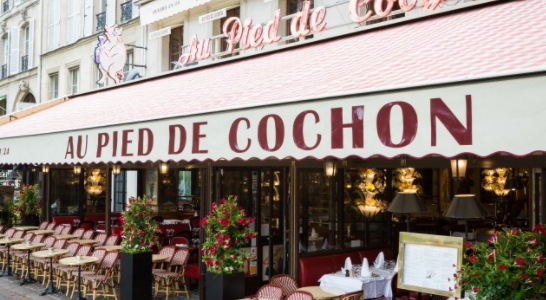
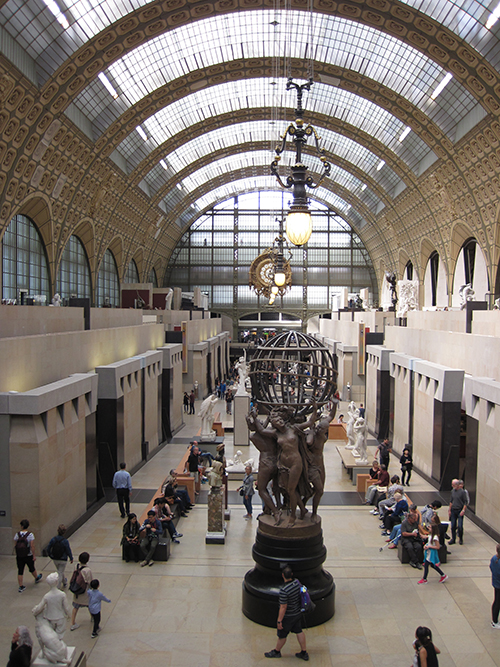
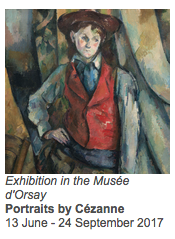 I have attended many Impressionist exhibitions in London but none compare with the one on at the Musée d’Orsay at the moment.
I have attended many Impressionist exhibitions in London but none compare with the one on at the Musée d’Orsay at the moment.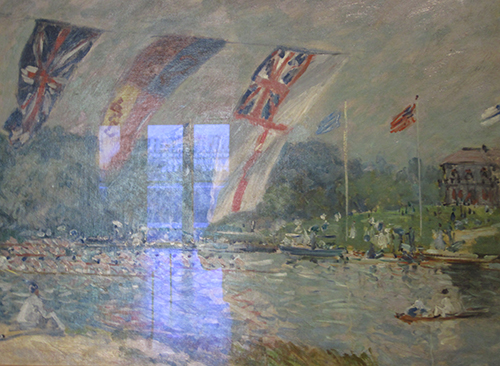 One exhibit, I had never seen before, by Sisley, was Les Régates à Molesey (Boating at Molesey).
One exhibit, I had never seen before, by Sisley, was Les Régates à Molesey (Boating at Molesey).